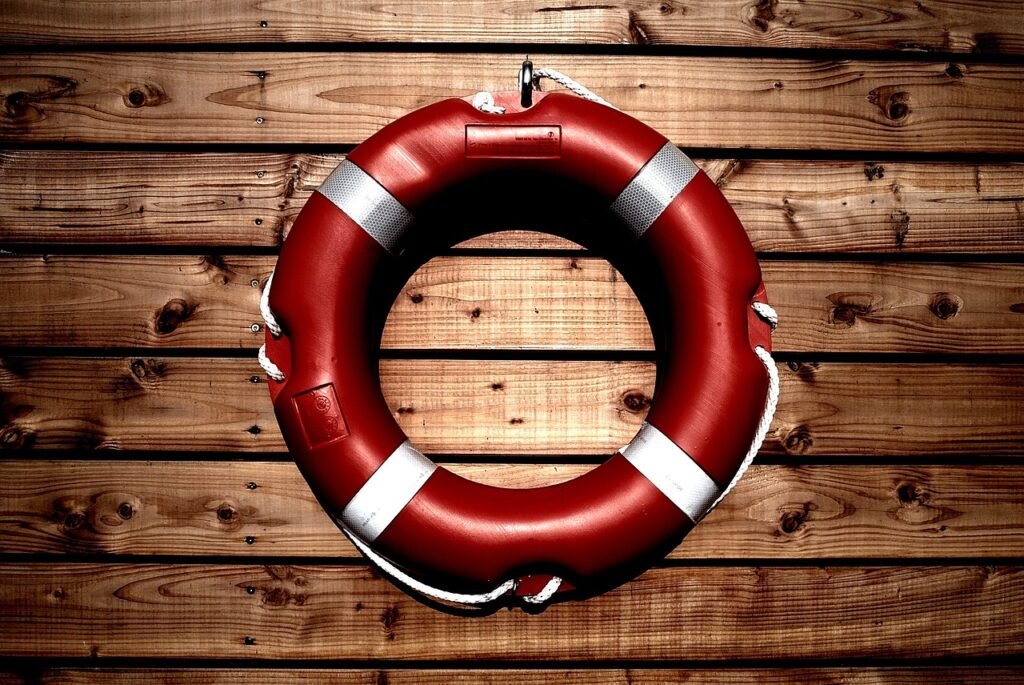How To Budget Your Weekly Pay
So you’ve just started a new job, and you’re receiving your income on a weekly basis. Now, you may be wondering how to make the most out of your weekly pay and effectively manage your expenses. Well, worry not! In this article, we will explore various tips and strategies to help you budget your weekly pay. Whether you’re a Catholic seeking to align your financial practices with your faith or someone looking for general advice, this guide will provide you with practical and actionable steps to achieve financial stability. So sit back, relax, and let’s dive into the world of budgeting weekly pay!
Understanding Your Income
When it comes to managing your personal finances, the first step is to understand your income. Knowing how much money you bring in each week is crucial in creating a budget and determining how much you can allocate towards your expenses and savings goals.
Calculating your weekly pay
Calculating your weekly pay is relatively simple. Start by looking at your pay stub or paycheck to find your gross income, which is the total amount you earned before any deductions. This could include your salary, hourly wages, or any additional income you receive.
Next, subtract any taxes, Social Security contributions, retirement plan contributions, and other deductions from your gross income. The resulting amount is your net income, which is the actual money you receive in your bank account.
By understanding your weekly pay, you can have a clearer picture of your financial situation and make more informed decisions about your expenses and savings goals.
Identifying additional sources of income
Aside from your primary job, it’s important to consider any additional sources of income you may have. This could include income from freelance work, side gigs, rental properties, investments, or any other form of income that comes in regularly.
Identifying these additional sources of income can provide a boost to your budgeting efforts and help you achieve your financial goals faster. Be sure to include these sources when calculating your overall income and allocating funds for expenses and savings.
Identify Fixed Expenses
Fixed expenses refer to those regular, recurring costs that you have little control over. They are considered essential expenses that you must pay to maintain your basic needs and lifestyle. By identifying and accounting for fixed expenses in your budget, you can better manage your money and have peace of mind knowing that these expenses are covered.
Housing costs
One of the most significant fixed expenses is your housing cost. This includes your rent or mortgage payment, property taxes, homeowners or renters insurance, and any maintenance fees or association dues. It’s important to budget for these expenses as a priority, as having a stable and comfortable living situation is essential.
Utilities
Utilities are another category of fixed expenses that you need to consider. This includes your electricity, gas, water, and sewer bills. Depending on where you live, you may also have additional utility costs such as internet, cable, or phone services. Make sure to allocate enough funds in your budget to cover these essential services.
Transportation expenses
Transportation expenses can include your car payment or lease, fuel costs, auto insurance, parking fees, and public transportation fares. These expenses are necessary to get you to work, run errands, or travel. Take into account your commuting distance, the cost of fuel, and any parking fees to accurately estimate your transportation expenses.
Insurance payments
Insurance is an essential aspect of financial planning, and it’s important to consider the cost of your insurance premiums in your budget. This includes health insurance, life insurance, car insurance, and any other types of insurance coverage you may have. Be sure to allocate funds for these payments to ensure you’re protected in case of unexpected events.
Variable Expenses
Variable expenses are those that can fluctuate from month to month and are more flexible in terms of the amount you spend. These expenses can vary based on your lifestyle choices, personal preferences, and needs. It’s crucial to budget for variable expenses to avoid overspending and ensure you have enough funds for your fixed expenses and savings goals.
Essential groceries

Groceries are a necessary expense for everyone. While the exact amount you spend on groceries can vary, it’s essential to budget for this expense category. Take into account your dietary needs, any dietary restrictions, and the number of people in your household when estimating your grocery expenses. Planning your meals and creating a shopping list can help you stay within your budget when grocery shopping.
Personal care items
Personal care items, such as toiletries and grooming products, are often overlooked when creating a budget. However, it’s important to account for these expenses as they are essential for maintaining personal hygiene and well-being. Items such as soap, shampoo, toothpaste, and razors should be included in your budget to ensure you have enough funds to cover these ongoing expenses.
Healthcare expenses
Healthcare expenses can vary depending on your individual needs and any existing health conditions. This includes expenses such as health insurance premiums, deductibles, copayments, prescriptions, and any other out-of-pocket medical costs. Properly budgeting for healthcare expenses will ensure that you have the funds needed to maintain your health and well-being.
Household supplies
Household supplies include items such as cleaning products, laundry detergent, paper towels, and other essentials needed to maintain a clean and functional home. While these expenses may not be as frequent as other variable expenses, it’s important to account for them in your budget to avoid unexpected costs and ensure you have everything you need to run your household smoothly.
Managing Debt Payments
Dealing with debt can be a significant burden, but by prioritizing your debt payments and exploring options for repayment, you can effectively manage your debt and work towards becoming debt-free.
Prioritizing debt payments
Start by listing all of your debts, including credit card balances, student loans, personal loans, and any other outstanding debts. Determine the interest rates and minimum monthly payments for each debt. It’s generally recommended to prioritize paying off high-interest debts first, as they can accumulate more interest over time and cost you more in the long run.
Consider strategies such as the debt snowball method, where you focus on paying off the smallest debt first while making minimum payments on your other debts. As you pay off one debt, you can then roll that payment into the next debt on your list, creating a snowball effect that helps you gain momentum and tackle your debt more efficiently.
Negotiating interest rates and payment plans
If you’re struggling to make your debt payments, it’s worth contacting your creditors to explore options for negotiation. You may be able to negotiate lower interest rates or payment plans that are more manageable based on your current financial situation. This can help alleviate some of the financial strain and make it easier for you to stick to your debt payment plan.
Consider seeking advice from a credit counseling agency or financial advisor who can guide you through the process of negotiating with your creditors and finding the best solution for your specific circumstances.
Setting Aside for Savings

Saving money is an essential part of financial planning. By setting aside funds for various savings goals, you can build a financial safety net, prepare for future expenses, and work towards achieving your long-term financial goals.
Determining savings goals
Start by identifying your savings goals. This may include short-term goals such as building an emergency fund, mid-term goals like saving for a down payment on a house, or long-term goals such as retirement savings. Having specific goals in mind will help you stay motivated and focused on saving.
Consider using the SMART goal-setting framework, which stands for Specific, Measurable, Achievable, Relevant, and Time-bound. This will help you set clear and realistic savings goals that you can work towards.
Choosing the Right Savings Account
Once you have determined your savings goals, it’s important to choose the right savings account to keep your funds. Consider factors such as interest rates, account fees, accessibility, and any limitations or penalties for withdrawals. Look for accounts that offer competitive interest rates and align with your savings goals, whether that is a high-yield savings account, a money market account, or a certificate of deposit (CD).
Keep in mind that it’s generally recommended to have separate savings accounts for different goals to help you track your progress and avoid dipping into funds that are earmarked for specific purposes.
Budgeting for Irregular Expenses
In addition to your fixed and variable expenses, it’s important to consider irregular expenses when creating a budget. Irregular expenses are those that do not occur on a regular monthly basis but are still essential or expected expenses.
Identifying irregular expenses
Examples of irregular expenses can include car maintenance and repairs, annual or semi-annual insurance premiums, holiday or birthday gifts, and even vacations. Take the time to think about any upcoming or expected expenses that may not occur every month but still need to be accounted for in your budget.
Creating sinking funds
To ensure that you have funds available when these irregular expenses arise, you can create sinking funds within your budget. A sinking fund is a designated amount of money set aside each month to save for specific irregular expenses. By allocating a portion of your income to these sinking funds, you can gradually save up and have the necessary funds available when these expenses occur.
For example, if you know you will have to pay for car insurance once a year, divide the total annual premium by 12 and set aside that amount each month into a sinking fund. When the bill comes due, you’ll have the money readily available and won’t be caught off guard by a large, unexpected expense.
Emergency Fund
Having an emergency fund is crucial for financial stability and peace of mind. An emergency fund is a separate savings account specifically designated for unexpected expenses or emergencies that may arise in life.

Importance of an emergency fund
Emergencies can range from unexpected medical bills to car repairs or even a sudden job loss. Having an emergency fund in place can help you navigate these situations without derailing your overall financial plan. It acts as a safety net, providing you with a financial cushion when you need it most.
Aim to save enough funds to cover at least three to six months’ worth of essential expenses. This includes your fixed and variable expenses, such as housing costs, utilities, groceries, and transportation. By having this buffer, you can handle unexpected financial setbacks with ease and avoid going into debt or depleting your savings.
Calculating and contributing to your emergency fund
To calculate the amount you should aim to have in your emergency fund, add up your essential expenses for one month. Then, multiply that amount by the number of months you want to save for, typically three to six months.
Once you have determined your target amount, break it down into manageable contributions based on your income and expenses. Set up automatic transfers or deposits to ensure a consistent contribution to your emergency fund. Even small monthly contributions can add up over time and provide you with the financial security you need.
Cutting Costs
To make your budget more effective and create more room for savings, it’s important to evaluate your discretionary spending and explore opportunities to cut costs.
Evaluating discretionary spending
Discretionary spending refers to non-essential expenses or those that are not critical for your basic needs. This can include eating out, entertainment, subscriptions, and other lifestyle-related expenses. Take a close look at your discretionary spending and identify areas where you can make adjustments or cut down on expenses.
Consider whether certain expenses bring you joy and align with your priorities. Just because something is available or convenient doesn’t mean it’s essential for your well-being or enjoyment. Be intentional with your spending and focus on the things that truly bring value to your life.
Exploring cost-cutting opportunities
Once you’ve identified areas where you can cut costs, explore different strategies to help you save money. This can include negotiating bills or subscriptions, shopping for better deals or discounts, meal planning and cooking at home, using public transportation or carpooling to save on transportation costs, and finding free or low-cost alternatives for entertainment and leisure activities.
Remember that cutting costs doesn’t mean depriving yourself of things you enjoy. It’s about finding a balance and making conscious choices that align with your financial goals and priorities.
Creating a Budget Plan
Now that you have a good understanding of your income, expenses, savings goals, and debt management, it’s time to create a budget plan that puts all the pieces together.
Allocating funds for each expense category
Start by listing all of your fixed and variable expenses, as well as your savings goals and debt payments. Then, allocate funds for each category based on your priorities and financial situation. Make sure to allocate enough for your fixed expenses to cover your essential needs and obligations.
Next, determine how much you want to save each month and set aside the necessary funds for your savings goals. Be realistic with your savings targets and adjust them as needed based on your income and expenses.
Ensuring a balanced budget
When creating a budget plan, it’s important to make sure your income covers all of your expenses and savings goals. Aim for a balanced budget where your total expenses and savings equal your total income. If your expenses exceed your income, revisit your budget and look for areas where you can make adjustments or find ways to increase your income.
A balanced budget provides a solid foundation for financial stability and allows you to make progress toward your financial goals without overspending or ending up in debt.
Tracking Your Expenses
Creating a budget is just the first step; regularly tracking your expenses is crucial to staying on track and making adjustments as needed. There are various budgeting apps and tools available that can help simplify the process and provide you with a clear overview of your spending habits.
Using budgeting apps or tools
Budgeting apps and tools can help streamline the process of tracking your expenses by automatically categorizing your transactions and providing visual representations of your spending. Many of these apps allow you to connect your bank accounts and credit cards, making it easier to keep a real-time record of your income and expenses.
Take advantage of these tools to regularly review your spending, identify trends or areas where you may be overspending, and adjust your budget as needed. By staying on top of your expenses and being aware of your financial habits, you can make more informed decisions and stay on track toward your financial goals.
Regularly reviewing and adjusting your budget
Your budget is not set in stone. It’s essential to regularly review and adjust your budget to reflect any changes in your income, expenses, or financial goals. Life circumstances can change, and unexpected events may occur, so it’s important to be flexible and adapt your budget as needed.
Set aside time each month to review your budget, track your expenses, and make any necessary adjustments. This will help you stay proactive and in control of your finances, ensuring that your budget continues to align with your financial goals and priorities.
By understanding your income, identifying your fixed and variable expenses, managing debt payments, setting aside funds for savings, budgeting for irregular expenses, having an emergency fund, cutting costs, creating a budget plan, and tracking your expenses, you can take control of your personal finances and work towards achieving your financial goals. Remember, budgeting is a continuous process, so stay committed, be flexible, and make financial decisions that align with your priorities and values.





